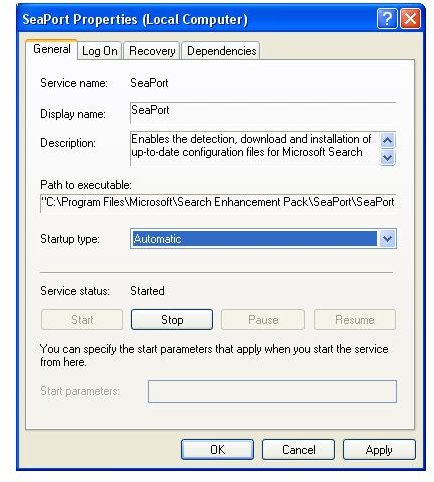seaport.exe - Step-by-Step Guide How-To Delete SeaPort Permanently
Guide to Kill SeaPort.exe
SeaPort.exe is installed by various Windows Live applications. Officially, it is part of the Windows Live Toolbar and should only be installed as part of that, but there have been conflicting reports as to whether or not this is actually true. Regardless, if you want to remove SeaPort.exe you’ll have to do it manually because there is no uninstall program installed along with the service.
Why Delete SeaPort Service
The SeaPort service is setup as a Windows automatic service, which means that it runs at boot time on each and every start-up. This increases what may already be a painfully slow Windows boot-up sequence. Additionally, seaport.exe runs continuously in the background. Doing so costs you around 4.5 MB of RAM. And, whenever SeaPort decides it is time to check for and download those updates, it will soak up some of your bandwidth as well.
As always, the prudent move is to weigh the benefits against the costs. Microsoft’s description of SeaPort says that it is used to download and install configuration files for search applications. The only one specifically named is search history. If you don’t use search history, or are fine with the un-enhanced version, then you have no need for seaport.exe and the resources it uses are simply wasted.
Even if you do use the enhanced search features of search history, there is the question of whether the benefits are large enough. If a process is set to run continuously on every startup a user should expect frequent and on-going updates which are important to the needed functionality. However, it does not appear that the files are updated even daily or weekly which begs the question as to why an always-on process is necessary.
Delete SeaPort Permanently Step-by-Step
Deleting SeaPort is cumbersome, but not difficult. If you noticed it was running, then you are most likely familiar with the tools that will required to shut it down for good or remove it.
First, in Service Manager, shutdown the SeaPort service by clicking the Stop button. You can also kill the process from within your task manager if you prefer.
Second, set the startup method of the SeaPort service to Disabled from Automatic.
For most users, this should be sufficient, but some people have reported SeaPort re-enabling itself somehow. If this is the case, or if you just want to be really sure, then go to \Program Files\Microsoft\Search Enhancement Pack\SeaPort\ and either delete or rename the seaport.exe file.
Deleting the file, of course, completely removes the component from your PC, while renaming it provides the option to rename it back should the situation arise where you actually need SeaPort.
Hopefully, Microsoft will re-think the method it used this time to add this additional service, and be more forthcoming in the future both with the options to not install in the first place, as well as the option to remove such services later if it turns out that a particular user finds no need for it.
This post is part of the series: Microsoft SeaPort Service seaport.exe
What is Microsoft’s SeaPort Search Enhancemet service? If you don’t need seaport.exe, what can you do about it? Can seaport.exe be deleted or uninstalled.
